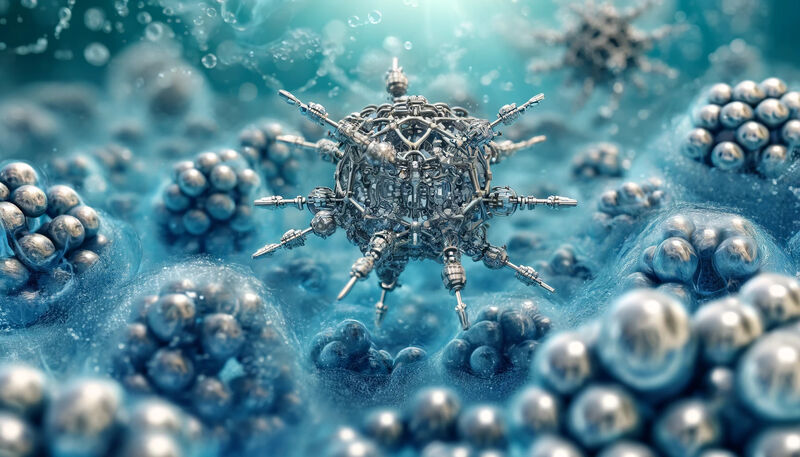Revolutionizing Environmental Remediation: Nanorobots Engineered with Platinum and Titanium Dioxide

In a groundbreaking study, researchers have introduced a novel approach to environmental remediation through the development of advanced nanorobots. These microscopic robots are designed using titanium dioxide nanotubes (TiO2-NT) and are uniquely decorated with platinum (Pt) single atoms and atomic-level species, leveraging the latest in point defect engineering. This pioneering technology promises to enhance the capabilities of nanorobots in capturing microplastics and potentially revolutionizing environmental cleanup efforts.
Engineering Breakthrough with Titanium Dioxide and Platinum
The study, led by a team of material scientists and environmental engineers, outlines the fabrication of TiO2-NT-based nanorobots. These nanorobots are first treated through annealing in a hydrogen atmosphere to create point defects, followed by a wet-chemical deposition process that introduces atomic-level platinum species onto their surfaces. This meticulous process results in two types of nanorobots: TiO2-HNT and TiO2-SA-NT, each demonstrating unique properties that enhance their functionality.
Propulsion and Microplastic Capture
The propulsion capabilities of these nanorobots are primarily driven by the catalytic decomposition of hydrogen peroxide, which is enhanced by the platinum decoration. The TiO2-SA-NT nanorobots show exceptional performance under ultraviolet (UV) light, exhibiting high velocities and negative photogravitaxis—a directional movement away from the gravity vector when exposed to light. This enables them to navigate and maneuver effectively in aquatic environments.
Moreover, these nanorobots demonstrate a significant ability to capture microplastics. This is attributed to the engineered surface properties that allow for the adhesion and aggregation of microplastic particles, which are a growing concern in water bodies worldwide due to their persistence and ecological impact.
Environmental Implications and Future Prospects
The integration of point defect engineering and platinum species into the nanorobots not only improves their operational efficiency but also opens new avenues for environmental technologies. These nanorobots can be deployed in various settings to address pollution, particularly in water systems where microplastics accumulate.
The study's findings suggest that such nanotechnologies could play a crucial role in advancing environmental cleanup efforts. By targeting microplastics at their source or in affected areas, these nanorobots could potentially reduce the impact of plastic pollution on marine and freshwater ecosystems.
Looking Ahead
As research continues, the potential applications of these TiO2-NT-based nanorobots could expand beyond microplastic remediation to include other environmental and possibly medical applications. The ability to customize the nanorobots for specific tasks by altering their surface properties paves the way for tailored solutions to a variety of challenges.
This innovative approach not only highlights the capabilities of nanotechnology in environmental applications but also sets a precedent for future research in the field of advanced material science and robotic engineering. As these technologies evolve, they offer a promising glimpse into new, effective methods for combating pollution at the microscopic level.

